
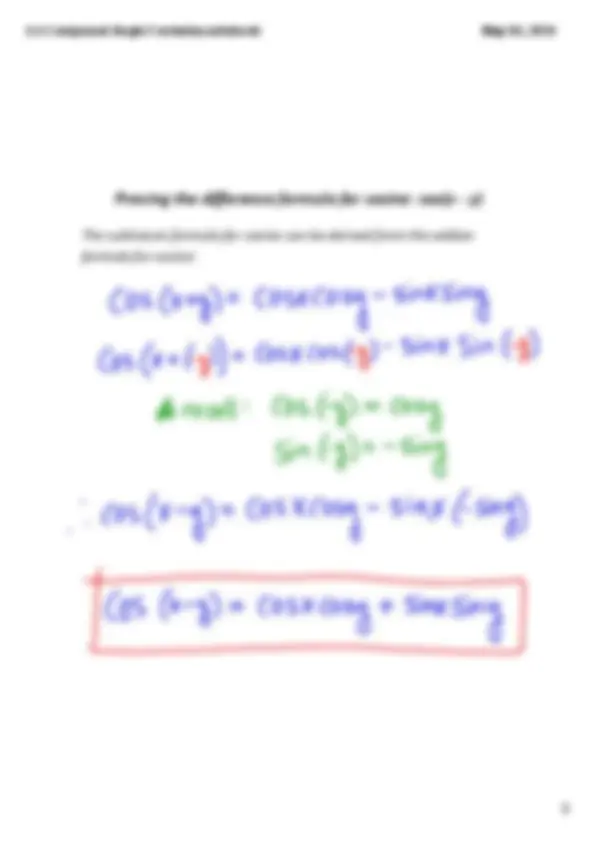
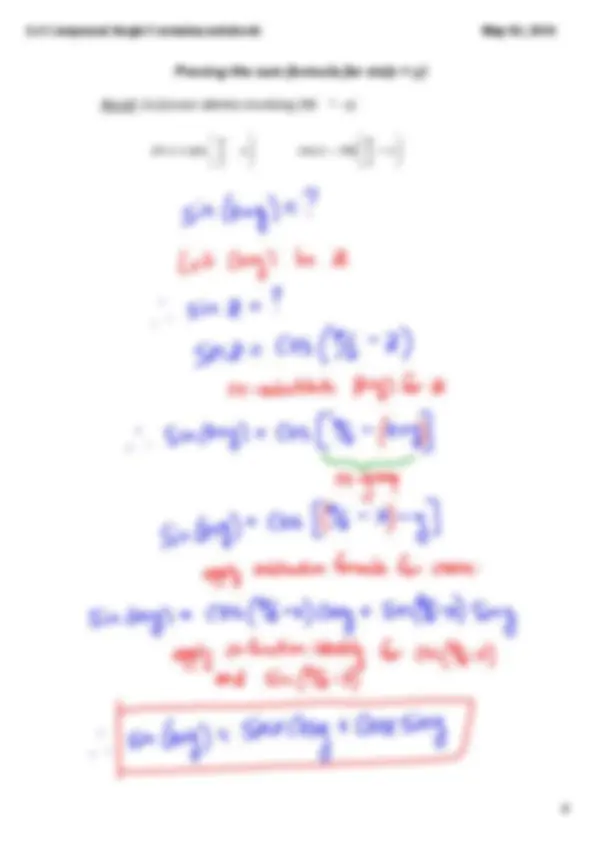
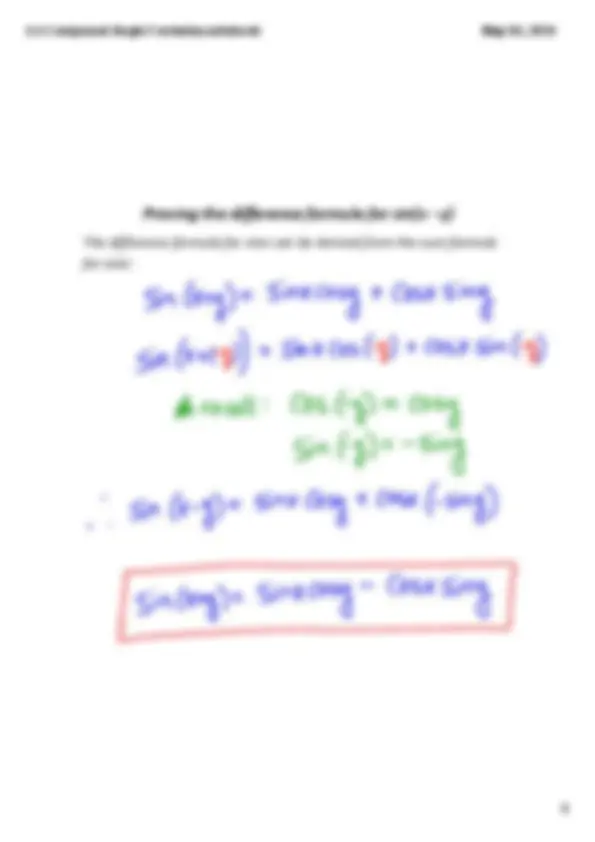
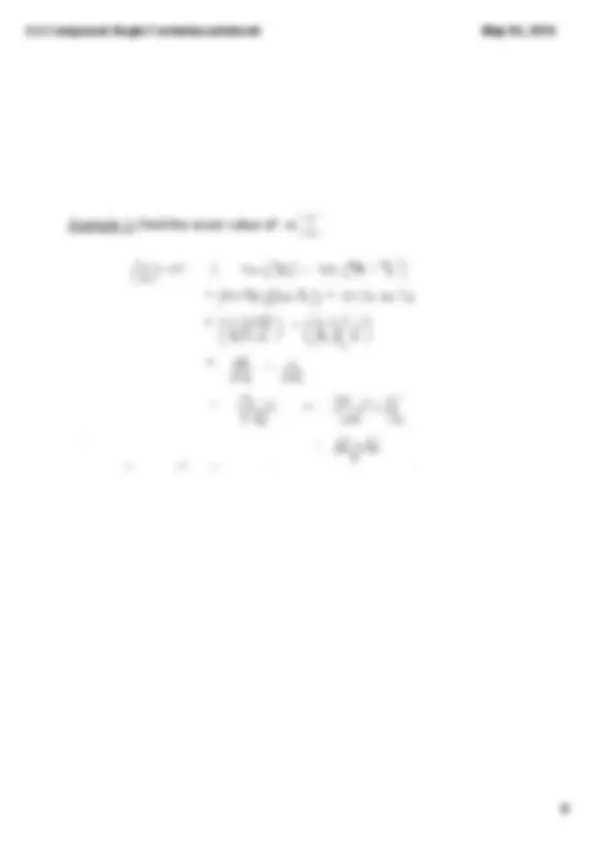
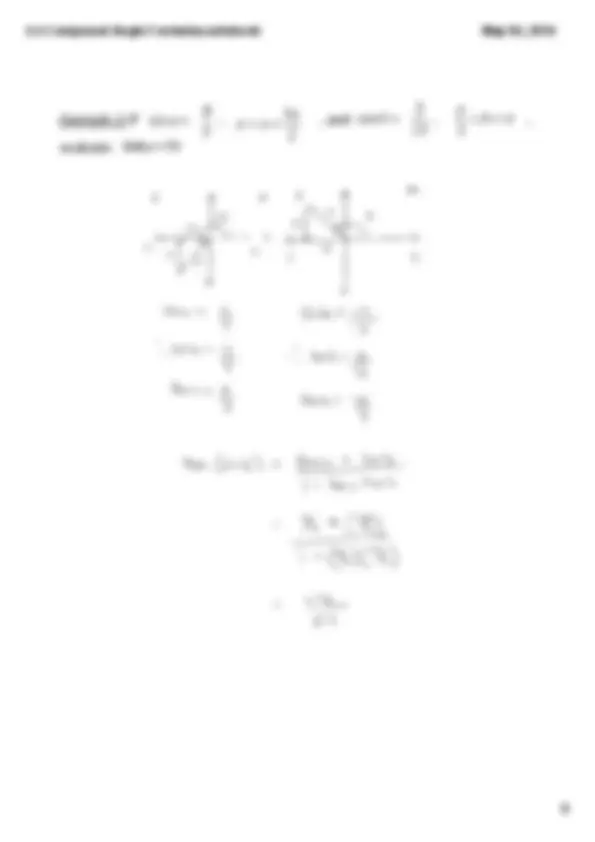



Study with the several resources on Docsity

Earn points by helping other students or get them with a premium plan


Prepare for your exams
Study with the several resources on Docsity

Earn points to download
Earn points by helping other students or get them with a premium plan
Community
Ask the community for help and clear up your study doubts
Discover the best universities in your country according to Docsity users
Free resources
Download our free guides on studying techniques, anxiety management strategies, and thesis advice from Docsity tutors
This notebook contains the derivation of compound angle formulas for sine, cosine, and tangent using algebra and the unit circle. It also includes examples of how to use these formulas to find exact trigonometric values.
Typology: Study notes
1 / 10

This page cannot be seen from the preview
Don't miss anything!







sin(x + y) = sin(x)cos(y) + cos(x)sin(y) sin(x ‐ y) = sin(x)cos(y) ‐ cos(x)sin(y) cos(x + y) = cos(x)cos(y) ‐ sin(x)sin(y) cos(x ‐ y) = cos(x)cos(y) + sin(x)sin(y) tan(x + y) = tan(x) + tan(y) / 1 ‐ tan(x)tan(y) tan(x ‐ y) = tan(x) ‐ tan(y) / 1 + tan(x)tan(y)
Proving the sum formula for cosine: cos(x+y)
Recall: Co‐funcon identes involving (90 0 ‐ x)
Proving the difference formula for sin(x ‐ y) The difference formula for sine can be derived from the sum formula for sine:
Example 1: Find the exact value of
Attachments 4.4 example 1.pdf 4.4 example 2.pdf